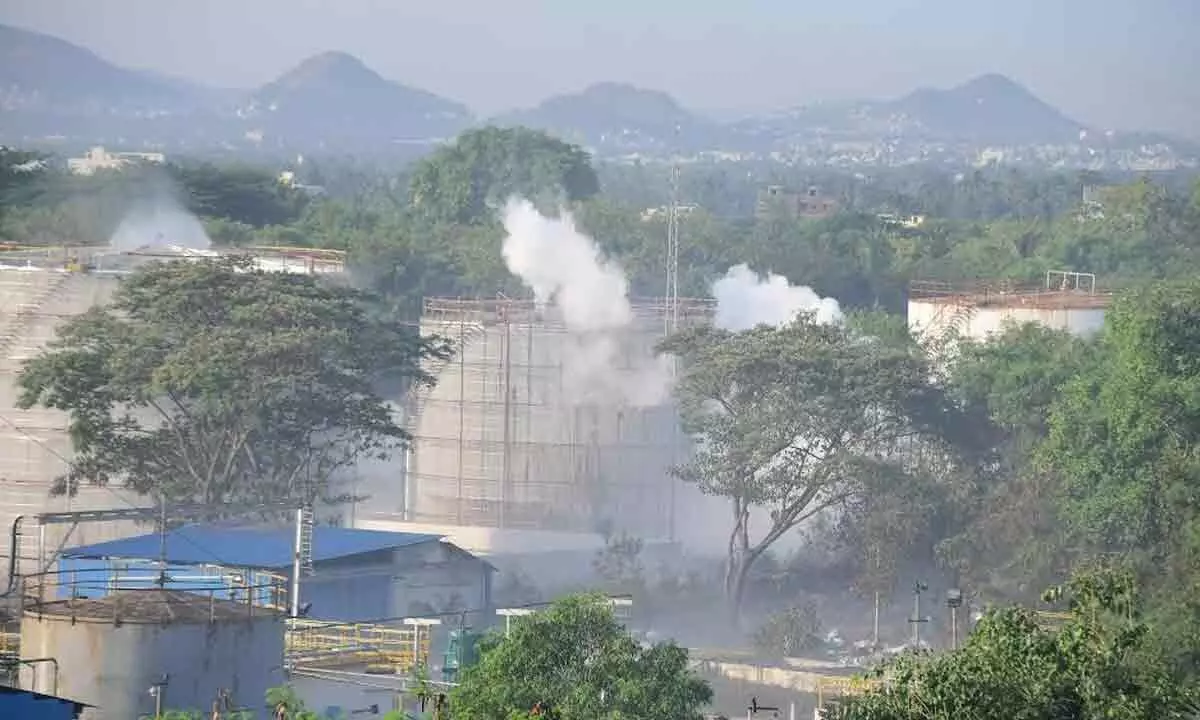Live
- Harassed by police, leader commits suicide in Baran
- Sikh preacher Dhadrianwale booked for rape, murder
- AI-powered digital initiatives at RGIA
- Yogi’s efforts revive Nagvasuki Temple ahead of Maha Kumbh
- Delhi drowning deaths : HC seeks CBI reply over interim bail to coaching centre officials
- Energy Secretary reviews power supply preparedness for summer
- ‘Welcome’ actor Mushtaq kidnapped near Meerut
- Farmer leader Dallewal’s fast unto death enters day 16
- City-based techies in Smart India Hackathon-2024 finals
- Techie suicide: Victim's family demands justice
Just In
Visakhapatnam: Experts for close monitoring of gas leak victims


File photo of styrene monomer gas leak at LG Polymers in Visakhapatnam
A team of experts recommends setting up of permanent health authority, use of participatory approach, registration of the exposed population, conducting studies and continuous observation of effects, both medium term and long term
Visakhapatnam: After a series of scientific findings, a group of experts brought the magnitude of health implications related to LG Polymers gas leak incident to the fore and have come up with mitigation solutions through a detailed journal of Dr NTR University of Health Sciences.
The team of experts include V Ramana Dhara, who also studied the Bhopal gas tragedy, of Indian Institute of Public Health (IIP), Hyderabad; chief of medical oncology, KIMS Icon Hospital, D Raghunadha Rao; GR Sridhar of Endocrine and Diabetes Centre and Thomas H Gassert from department of environmental health, Harvard TH Chan School of School of Public Health, Boston.
The team made a host of healthcare recommendations. They include a multispeciality hospital or a school of public health with the state-of-the-art facilities for the monitoring and specialised treatment of victims.
For monitoring of health effects, the team suggested establishment of permanent health authority, use of participatory approach with consultation from all the stakeholders, registration of the exposed population using specific exposure criteria, conduct studies and monitor continuously for intermediate and long term effects.
The other recommendations include a speciality centre for treatment, monitoring and research in occupational and environmental health, styrene exposure risk stratification for individual victims, periodic public disclosure of the collected health data and making it accessible for the victims and public along with economic and social compensation.
Given the health implications of the victims, Dr Raghunadha Rao accords top priority to establishing a permanent health authority. "Also, what is required is the setting up of a multidisciplinary team for enumeration, risk stratification and periodic assessment of all the victims with the support of health, psychological, sociological and economic experts," he opines.
The impact of the styrene monomer vapour on people was explained by the experts.
According to the United States Environmental Protection Agency's Acute Exposure Guideline Levels (AEGLs), those exposed up to 60 minutes of styrene monomer concentrations may suffer from life-threatening health effects or in some cases even lead to death. Such persons fall under the bracket of red zone (0.1 to 1-km from the source with concentrations greater than 1,100 ppm).
Likewise, those in the orange zone are likely to experience adverse health effects or an impaired ability for an exposure of the vicious smoke up to 60 minutes (1.1 to 2.5-km from the source with concentrations from 792-114 ppm).
The ones in the yellow zone are likely to experience apparent discomfort, irritation or certain asymptomatic non-sensory effects (2.6 to 6.3-km from the source with concentrations from 110-20 ppm).
With the International Agency for Research on Cancer not ruling out the possibility of the styrene being carcinogenic, experts emphasise on close monitoring of the gas leak victims and implementation of recommended measures.

© 2024 Hyderabad Media House Limited/The Hans India. All rights reserved. Powered by hocalwire.com






